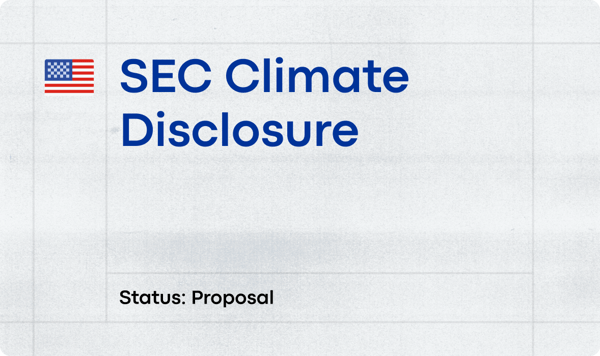As a key part of the EU’s Competitiveness Compass, the Omnibus Simplification Package aims to streamline corporate sustainability reporting by introducing changes to:
- The Corporate Social Responsibility Directive (CSRD),
- The Corporate Social Due Dilligence Directive (CSDDD),
- The EU Taxonomy, and
- Carbon Border Adjustment Mechanism (CBAM) – not covered in this article.
The draft proposal, released on February 26, 2025, has already sparked significant debate.
A major concern comes from businesses that have invested heavily in compliance, with companies like Primark, L’Occitane, Nestlé, and NEI Investments urging the Commission not to weaken sustainability reporting standards, warning that such changes could undermine business certainty and investment.
It is important to note that the Omnibus Package is still a proposal and must go through political negotiations before becoming law. This regulatory uncertainty leaves apparel and footwear brands questioning whether Wave 2 companies should prepare for CSRD reporting in 2026 or wait for further clarity. More on that later – for now, let’s take a look at what we know so far about the proposal, or skip ahead directly to our recommendations.
TL;DR: The 5 Main Proposed Changes
- Alignment of CSRD and CSDDD Scope: CSRD now applies only to companies with 1,000+ employees, aligning with CSDDD and exempting ~80% of previously in-scope companies, including listed SMEs. A new “Small Mid-Cap” category (250–1,500 employees, <€1.5B sales) faces lighter reporting obligations.
- Delayed Implementation Timelines: CSRD Wave 2 and 3 reporting is postponed to 2028 (from 2026), while CSDDD compliance is delayed to 2028. Extended to 2027 is transposition, a process by which EU Member States incorporate EU directives into their national legal systems.
- Limited Value Chain Data Requests: Companies cannot demand extensive sustainability data from business partners with fewer than 1,000 employees, including suppliers and subcontractors, except in high-risk cases.
- ESRS Standards Revision: From 2028, ESRS will have fewer mandatory data points, more quantitative focus, and clearer mandatory vs. voluntary disclosures.
- Sector-Specific Standards Removed: CSRD/ESRS sector-specific sustainability reporting requirements are eliminated.
Regulatory Pushback
While some EU governments, such as France and Germany, have recently called for delays and amendments to CSRD, the Omnibus Simplification Package has sparked growing opposition from businesses, investors, policymakers, and climate advocates.
Climate activists and researchers warn that the Omnibus initiative risks weakening EU climate commitments. An open letter from 240 European researchers, mainly economists, cautioned that regulatory “simplification” may lower ambition, undermining the European Green Deal.
Moreover, more than 200 European financial firms and investors have also warned that loosening sustainability rules reduce investor confidence in EU markets.
A key concern comes from businesses that have already invested heavily in compliance, as they are restructuring teams, training employees, and developing sustainability frameworks.
However, the European Commission claims that the goal of the Omnibus Simplification package is not to change the content and goals of the regulations but to simplify them.
Why Should Fashion Brands Continue Preparing for Compliance?
It is important to emphasize that while the Omnibus Simplification Package proposes regulatory adjustments, its adoption timeline remains uncertain. This uncertainty raises critical considerations for brands evaluating whether to proceed with compliance preparations. Several key factors should be considered:
- The Omnibus proposal is still at the initial stage of the legislative process, meaning further revisions and negotiations could alter its final provisions.
- For the CSRD reporting delay to 2028 to take effect, the Omnibus proposal must be enacted by December 2025, an ambitious timeline considering that CSRD itself took 25 months to become law.
- Although some provisions in the Omnibus proposal may be fast-tracked, accelerating the legislative process significantly beyond the standard timeframe is unlikely.
- Companies that delay CSRD preparations in anticipation of the Omnibus proposal amendments risk non-compliance. If the proposal is not enacted in time, Wave 2 companies will still be required to report on 2025 data in Q1 2026, which they may not have collected if they assumed a delay.
The legislative process consists of six formal steps (see below), and if it follows standard EU procedures, finalization could take years.
.png?width=2000&height=1466&name=23137%20(2).png)
Main Elements of the EU Omnibus Simplification Package
Key Proposed Changes to the CSRD
- Reduction in the Scope of Reporting Companies: The CSRD reporting threshold will increase to companies with more than 1,000 employees. This change removes approximately 80% of companies currently within the CSRD’s scope, aligning it more closely with CSDDD thresholds. Listed SMEs will no longer be required to report under CSRD.
- Postponement of Reporting Deadlines: The reporting start date for Wave 2 and 3 companies is postponed by two years.
- Value Chain Data Limitations: For companies with fewer than 1,000 employees, reporting will be voluntary under a simplified standard based on VSME ESRS (Voluntary SME Standard). Brands within CSRD’s scope cannot demand additional sustainability data from their smaller value chain partners beyond this voluntary standard.
- Revision of European Sustainability Reporting Standards (ESRS): Reduce the number of required data points, making reporting simpler. Clarify unclear provisions and improve consistency with other EU regulations.
- Removal of Sector-Specific Standards: The requirement for textile sector-specific sustainability standards is eliminated, reducing compliance complexity.
- Assurance Requirements Adjustment: The proposal removes the transition to reasonable assurance, keeping limited assurance as the only requirement.
.png?width=2000&height=738&name=23138%20(1).png)
Read our CSRD fashion deep dive here.
Key Proposed Changes to the CSDDD
- Extended Compliance Deadlines: The transposition deadline is postponed to July 26, 2027, giving Member States more time to implement the directive. The first phase of application for the largest companies is delayed to July 26, 2028, while the European Commission will issue guidelines by July 2026 to help brands align with best practices.
- Limitation of Due Diligence Scope: Companies will only be required to conduct due diligence on direct suppliers (Tier 1) rather than across their full value chain. Full due diligence beyond direct suppliers will only be necessary if a company has plausible evidence of risks further down the supply chain.
- Assessment Frequency Reduction: Companies will now be required to conduct due diligence assessments every five years instead of annually.
- Restrictions on Information Requests from SMEs and Small Mid-Caps: Large companies cannot demand extensive sustainability data from business partners with fewer than 500 employees, except for specific information required under CSRD Voluntary Sustainability Reporting Standard for non-listed SMEs (VSME).
- Removal of EU-Wide Civil Liability: The proposal deletes the harmonized EU civil liability framework, meaning liability will now be determined by national laws.
- Changes to Penalties: The directive no longer includes fines based on global turnover, reducing financial risks for companies in scope.
Read our CS3D fashion deep dive here.
Key Proposed Changes to the EU Taxonomy
- Increased Thresholds, Reduced Scope: Mandatory reporting now applies only to companies with 1,000+ employees, reducing the number of affected businesses by 80%.
- Simplified Reporting Templates: The proposal reduces the number of required data points by nearly 70%.
- Flexibility in Reporting and Materiality Exemptions: Companies will no longer need to assess Taxonomy eligibility or alignment for economic activities that are not financially material, meaning activities that account for less than 10% of their total turnover, capital expenditure, or total assets will be excluded from reporting obligations.
Read all about these changes in the European Commission’s questions and answers on simplification omnibus I and II.

The Value of Environmental Reporting in the fashion industry
The Omnibus Simplification Package introduces significant changes to EU sustainability regulations, aiming to reduce compliance burdens. While simplification was desired by a lot of companies, the discussion has now shifted towards whether or not this is deregulation. Whichever side of the debate you fall on, reducing the number of companies required to report means that fewer businesses will engage with this process, limiting the availability of industry-wide data needed for effective decarbonization.
Sustainability reporting is not just a compliance exercise — it is a tool for fashion brands to understand and manage their environmental impact. For example, the ESRS asks fundamental questions that help companies evaluate their sustainability performance across multiple indicators.
When leadership teams feel overwhelmed by sustainability reporting, it often reflects a deeper issue: a lack of clarity about their company’s impact. Just as financial reporting has long been a business standard, sustainability disclosures like those under the Corporate Sustainability Reporting Directive should be seen as essential business insights, not just regulatory obligations.
How Carbonfact Can Help with EU Sustainability Regulations
Despite uncertainty around the EU Omnibus Simplification Package, apparel and footwear brands must stay prepared for sustainability reporting. Carbonfact provides adaptable data collection and reporting tools, ensuring compliance regardless of shifting deadlines.
Whether CSRD Wave 2 remains in 2026 or moves to 2028, our platform helps you build a resilient sustainability data infrastructure — avoiding last-minute scrambling and keeping you ahead of regulatory changes.
Here’s how:
- Data collection: We consolidate and clean your diverse data sets, from any source, in any format.
- Improve data and fill gaps: We analyze your data, detect errors and fill in your gaps. Our data module - trained on extensive primary data sets - automatically fills in missing details like component weights, d-tex, and transport.
- LCA: Our specialized algorithms then run detailed Life Cycle Assessments that transform raw numbers into meaningful environmental metrics.
- Report: All this granular data is then shaped into automatically generated reporting frameworks, including CSRD, GHG, and others.
By getting started with our platform today, you're not just checking compliance boxes – you're gaining actionable insights that drive smarter decisions about your environmental impact, no matter when the reporting deadlines ultimately fall.







 Lidia Lüttin
Lidia Lüttin


 Martin Daniel
Martin Daniel